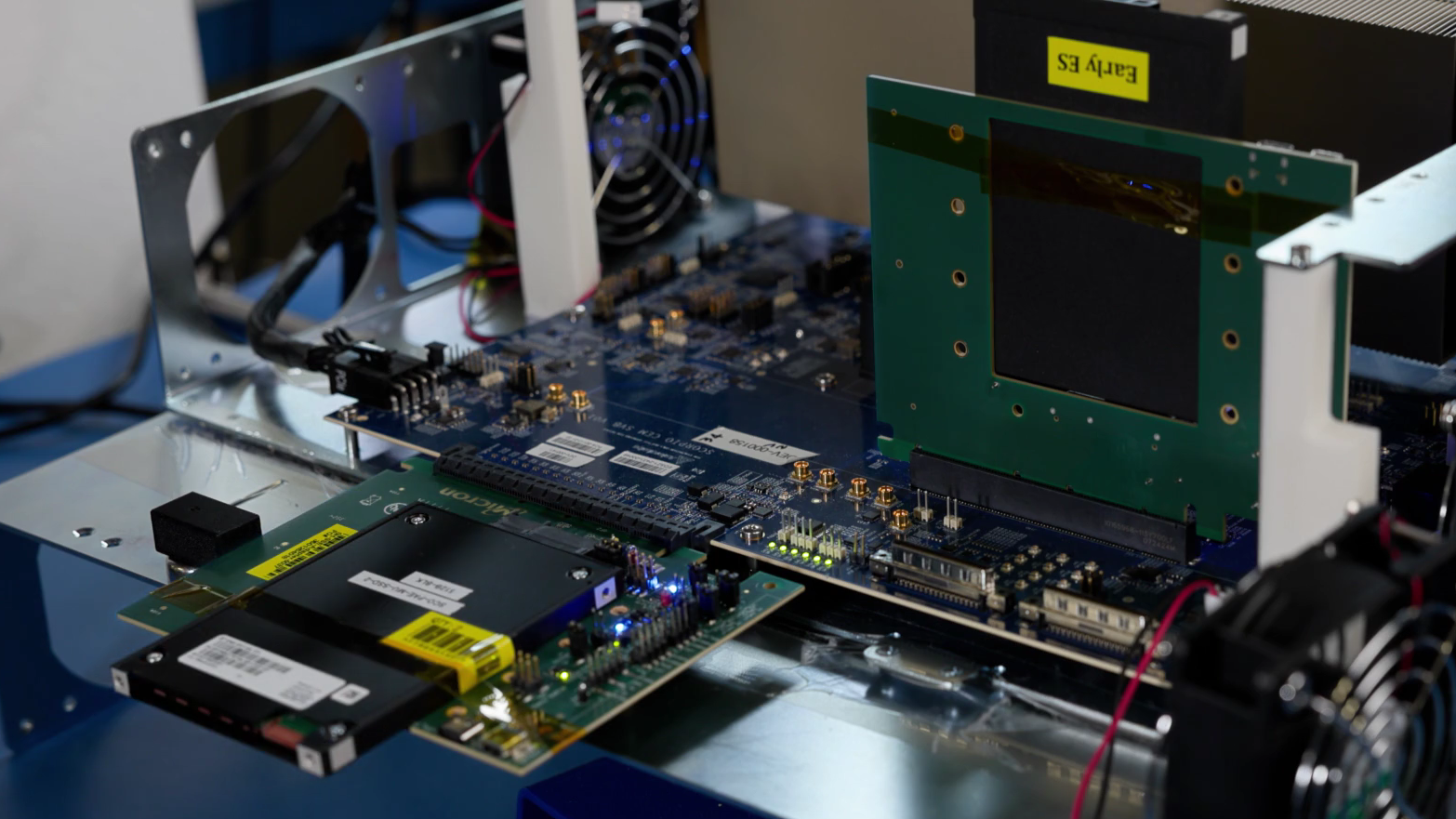Micron shows off world's fastest PCIe 6.0 SSD, hitting 27 GB/s speeds — Astera Labs PCIe 6.0 switch enables impressive sequential reads

Micron and Astera Labs teamed up at DesignCon 2025 to show off the world's first PCIe 6 SSDs in the wild, paired with Astera's Scorpio PCIe 6.0 network fabric switch. When connected to two Micron PCIe 6.0 SSDs and an Nvidia H100 GPU, the switch handled sequential SSD read speeds of over 27 GB/s on each drive — doubling the speeds of today's fastest PCIe 5.0 drives.
The new Micron SSD was first shown off at Astera Labs' booth at DesignCon 2025, a high-end chip design conference that took place in the last week of February in California. The companies waited to share info on the test bench publicly until this week on the Astera Labs blog.
The Micron PCIe 6 SSD was confirmed to be the same model teased by Micron in August of last year as the industry's first PCIe 6.0 storage drive, then announced to have 26 GB/s read speeds.
The Astera Labs test bench used at DesignCon 2025 let Micron's PCIe 6 drive surpass expectations and measure read speeds of 27.14 GB/s. For context, the fastest PCIe 5.0 SSD that we've tested, the Crucial T705, hits maximum read speeds of 14.5 GB/s, maxing out the PCIe 5.0 x4 connection and still sitting at half of the speed of Micron's latest and greatest.
The drive was pushed to this point thanks to Astera's Scorpio P-Series Fabric Switch, an industry-first network switch at PCIe 6 that connects up to 64 PCIe 6.0 lanes. The switch, built to enable quick communication between CPU, GPU, and storage nodes in HPC and AI clusters, was paired with a helping software hand from Nvidia's Magnum IO GPUDirect (GDS). GDS provides a direct path for memory access, giving storage devices a clear line to GPU memory without going through the CPU buffer and adding latency.
Astera Labs has also been teasing its PCIe 6 products for some time. Last March, Astera's booth at GTC 2024 showed off its PCIe 6.0 Aries retimers—a device that acts as a signal repeater for PCIe devices, boosting PCIe signal integrity when tools such as PCIe bridges and extenders are in use. The Aries retimers were among the first PCIe 6.x devices seen in the real world, and now, Astera Labs and Micron make a strong display, showing that PCIe 6 is ready to rumble.
PCIe 6.x, so-called due to constant revisions and errata to the PCIe 6 spec (we are currently on PCIe 6.3), promises to be the next horizon for enterprise users and, eventually, consumer products. Today's PCIe 5.0 maxes out at 128 GB/s of bidirectional speeds on an x16 bus. PCIe 6.x doubles this, reaching 256 GB/s over an x16 connection. The HPC and AI enterprise industry is crying out for faster speeds, and PCIe 6.0 promises to enable them as it enters the market.
Get Tom's Hardware's best news and in-depth reviews, straight to your inbox.

Sunny Grimm is a contributing writer for Tom's Hardware. He has been building and breaking computers since 2017, serving as the resident youngster at Tom's. From APUs to RGB, Sunny has a handle on all the latest tech news.